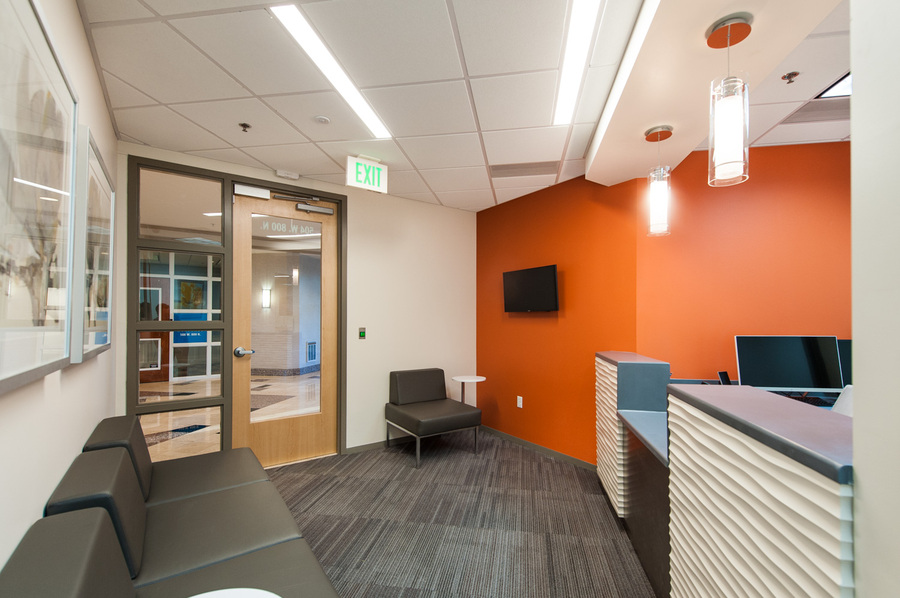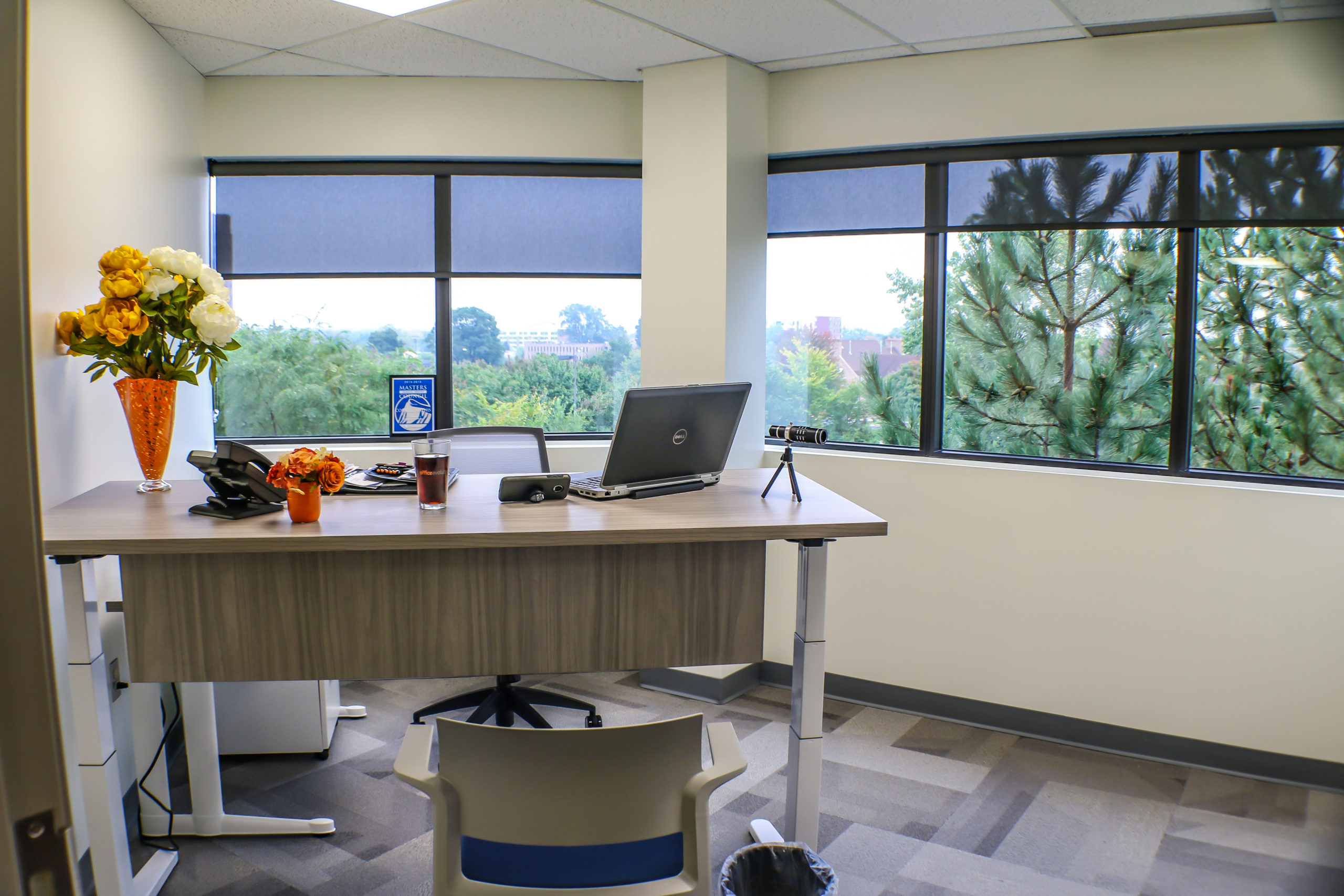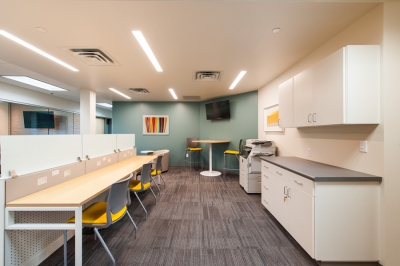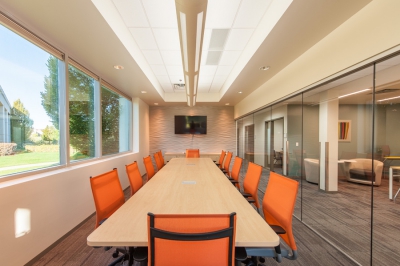
Understanding the Psychology of Office Design
There’s a good reason why the idea of spending the day in an office doesn’t spark excitement or creativity for some people, and it has nothing to do with work.
Rather, the office environment itself has a lot to do with your motivation, productivity, and overall sentiment toward your job.
Most offices follow a cookie-cutter design with many of the same elements: clusters of cubicles or shared work areas surrounded by private workspaces and distractions galore.
Unhappy workers cost the U.S. up to $550 billion per year. So, many businesses are breaking away from the confines of tradition and finding that the psychology of office design isn’t something they can afford to ignore.
The Power of Office Design
If you’ve ever loathed the idea of working in a cubicle or gotten annoyed by interruptions or distractions, it’s not just you. The way an office is designed can impact your attitude toward work on a psychological level. If an environment isn’t conducive to the way you work best, it could negatively impact your productivity, quality, and general job satisfaction.
Environmental psychology is the study of the relationship between people and their surroundings, and it most certainly applies to the office world. In general, loving the space you’re in will have a positive effect on how you feel, think, and act, while disliking your space will have the opposite effect.
Applied to the office environment, here’s what environmental psychology can tell us:
Your Office Affects Your Happiness
Workspaces should be designed to inspire and create positivity. One of the biggest things that can stifle creativity is not having the freedom of how, where, and when you work.
It can be a blow to morale when office design is constricted, expecting an extroverted employee to do their best work in a cubicle or an introvert to work in a shared workspace.
Bottom line: if employees aren’t comfortable in their workspace, your company’s morale, productivity, or turnover rate may suffer.
 It Can Help (or Hinder) Productivity
It Can Help (or Hinder) Productivity
Too often, employers are at a loss as to why productivity suffers and what they can do about it. They focus on lighting, ventilation, and noise reduction, which can contribute to the overall design. But they neglect how other elements like color, function, flexibility, and layout factor into the environment.
For example, bright colors tend to spur creativity and energy. And there is noise. Some people prefer the quiet, closed-off space of a cubicle while others like to collaborate in a shared workspace.
The hard part is there is no single best solution. Much of office design psychology hinges on your people, which is why integrating flexibility into your environment can give you the best chance of catering to every work style.
Office Environments Affect the Talent You Attract
Every office gives off a vibe the moment you step inside. When candidates come to your office for an interview, they’re getting a taste of what it would be like to work there. They see what your workspaces look like. They look at whether employees seem happy and motivated to work there. Most importantly, they start to envision themselves working in your office every day, and you want that image to be a positive one!
Tip the scales in your favor by adding innovation to your office environment so candidates can feel confident about accepting a position.
 Innovation in Office Design
Innovation in Office Design
Today’s office space looks strikingly different than it did sixty years ago, and that’s a good thing!
In the 1950s, most offices followed the open workspace design that allowed for shared resources and scalability. Cubicles emerged in 1964, which were designed to allow more freedom for employees but ended up becoming a way for companies to cram as many employees as possible into a space.
Now, hybrid workspaces are the prime choice among companies, with a twist. Tech companies are leading the charge in transforming the traditional office environment to appeal to employees’ psychological needs.
For example, Google’s office in London features a suite of amenities, including a pool, climbing wall, and a rooftop garden. Facebook offers desks with adjustable heights so workers can choose what works best for them. Foursquare’s New York-based office includes ping pong tables and rooms with different themes to give workers a space that matches their interests.
Though it sounds like a lot of play and not much work on the surface, these tech companies are actually putting the psychology of office design into practice. They know the environment in which you work will ultimately affect your output.
Creating an environment people want to work in can go a long way in attracting and retaining talent, improving morale, and spurring creativity, innovation, and productivity that will carry your company forward.
 How to Create a Thoughtfully Designed Workspace
How to Create a Thoughtfully Designed Workspace
The good news is that you don’t have to invest in a gym or swimming pool to improve your office design. There are some simple ways you can appeal to psychological factors to create happy, motivated employees.
Put People First
First and foremost, your employees’ needs should be taken into consideration. Current and future workforce trends can affect expectations of the office, particularly as Millennials move into the majority role. Millennials tend to place heavier emphasis on work-life balance, expecting their job to be just as much an experience as it is a paycheck.
Millennials have also developed a reputation as the “job hopper generation.” Unlike previous generations, they’re the ones who are more likely to jump ship when they face undesirable work conditions. They don’t feel comfortable being stuck in a job they don’t like and aren’t afraid to change jobs when there’s no major incentive to stay.
Having the right office design can help to combat this by giving employees more freedom and flexibility over their working conditions. They can achieve a better work-life balance and feel like their employer cares enough about employees to create an environment people enjoy.
Be Mindful in Your Design
All offices share most of the same basic building blocks: furniture, lighting, colors, flooring, shared workspaces, private workspaces, and common areas. The major difference between an office that satisfies employees vs. one that doesn’t is mindfulness.
When you’re designing your space, it’s important to be mindful about your choices.
For example, is there enough natural light to energize your employees? Studies show that natural light has a more positive impact on productivity than other lighting, plus it can help improve mood and creativity.
Do you offer flexible workspaces to allow each employee to choose space that fits their comfort level? Some people thrive from being in the company of others, so a shared workspace might be ideal. Other people prefer to work in peace and quiet, so a private workspace would make more sense.
How Office Evolution Takes the Guesswork Out of Mindful Office Design
It can be tempting to stick with what you’ve always believed an office should look like, but doing so prevents you from getting the most benefit from your space. Today’s offices aren’t just tidy cubicles and waiting rooms, but rather spaces that empower your employees to do their best work.
Office Evolution helps take the guesswork out of mindful office design by providing a range of shared and private workspaces to give your employees total flexibility. We infuse the power of environmental psychology in every space so you can move right in and get to work.
Good design can make a real difference in how your employees feel, think, and act at work, so never settle for an office space that doesn’t meet your needs. To reap the benefits of flexible workspaces for your employees without having to build it on your own, find the Office Evolution location nearest you.